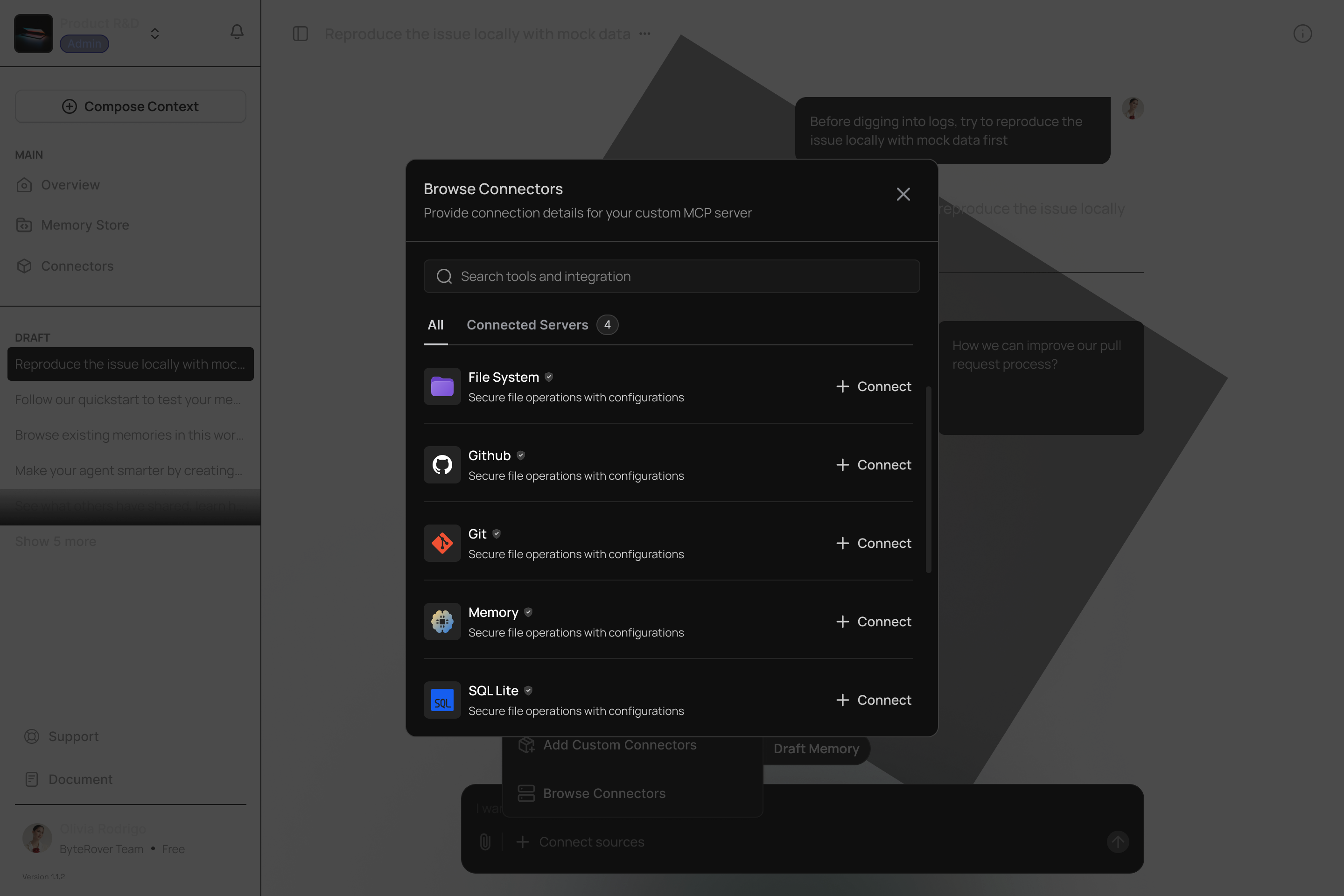Skip to main content
MCP Server Modes
Cipher offers two operational modes when running as an MCP server, each designed for different use cases and integration patterns.
Default Mode
General Idea & Why Use It
The default mode provides a streamlined, unified interface focused purely on cipher’s core memory management capabilities. This mode is ideal when you want:
- Clean Integration: Simple, single-tool interface that doesn’t clutter your development environment
- Memory-Focused Workflow: Direct access to cipher’s persistent memory without additional complexity
- Lightweight Setup: Minimal configuration with maximum memory benefits
- Consistent Experience: Unified tool interface that handles all memory operations seamlessly
Diagram
In default mode, cipher exposes only the ask_cipher tool, which serves as a unified interface for all memory operations. External coding agents connect directly to cipher’s memory capabilities without access to additional MCP tools.

 When cipher runs in default mode, it exposes a single, powerful tool that coding agents can use for comprehensive memory management:
When cipher runs in default mode, it exposes a single, powerful tool that coding agents can use for comprehensive memory management:
Storage Operations
- Knowledge Storage: Store code patterns, solutions, and best practices
- Reflection Memory: Record learning experiences and improvements
- Entity Management: Add coding concepts and their relationships
- Context Preservation: Maintain project and codebase understanding
Retrieval Operations
- Semantic Search: Find relevant past solutions and patterns
- Context Retrieval: Get background information for current coding tasks
- Pattern Recognition: Identify recurring themes and successful approaches
- Cross-Session Continuity: Access knowledge from previous sessions
Aggregator Mode
General Idea & Why Use It
The aggregator mode transforms cipher into a comprehensive development hub that combines its memory capabilities with external MCP tools. This mode is perfect when you need:
- Comprehensive Toolset: Access to both cipher’s memory tools and external MCP servers (filesystem, databases, web browsing, etc.)
- Unified Agent Experience: Single connection point that provides access to multiple development tools
- Advanced Workflows: Complex development tasks that require both memory management and external tool integration
- Centralized Development Hub: One MCP server that aggregates multiple capabilities
Diagram
In aggregator mode, cipher acts as a proxy that exposes both its internal memory tools and tools from configured MCP servers. External coding agents connect to cipher and gain access to the full ecosystem of development tools.

- ask_cipher: Unified memory interface (same as default mode)
- cipher_memory_search: Direct semantic search capabilities
- cipher_store_reasoning_memory: Advanced reasoning pattern storage
- cipher_extract_entities: Knowledge graph entity extraction
- cipher_query_graph: Advanced graph-based queries
- Plus all other internal memory and reasoning tools
When configured with mcpServers in your cipher.yml, you also get access to:
- Filesystem Tools: File operations, directory navigation, code analysis
- Database Tools: SQL queries, schema exploration, data management
- Web Browsing Tools: Research, documentation lookup, API exploration
- Git Tools: Repository management, version control operations
- And More: Any MCP server you configure in your cipher.yml file
Mode Selection
The mode cipher operates in depends on your configuration:
- Default Mode: When cipher is started without additional MCP server configurations
- Aggregator Mode: When cipher is configured with external MCP servers to proxy through
Both modes provide cipher’s core memory management capabilities, with aggregator mode extending functionality by including external development tools.
Memory System Components
Cipher’s memory system consists of three main components that work together to provide comprehensive knowledge storage and retrieval:
- Knowledge & Reflection Memory (Vector Store) - Semantic search capabilities for code patterns and solutions
- Knowledge Graph (Graph Store) - Relationship modeling between coding concepts and entities
- Session & Metadata (SQLite and Postgres Database) - Operational data and conversation history
For detailed information about each memory component, including architecture, configuration options, and use cases, please refer to the Memory Overview page.
Next Steps
For detailed setup instructions and configuration guidance, please refer to the Connections page, which provides comprehensive instructions for integrating cipher with your development environment.
The connections page covers everything you need to get cipher running as your persistent memory layer, transforming your coding agent into a persistent coding companion that grows smarter with each interaction. 


